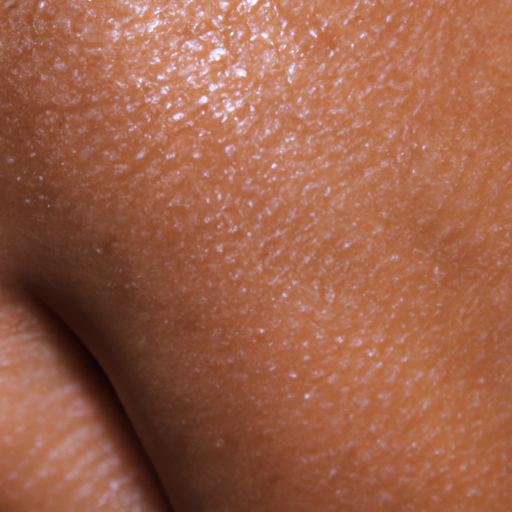Title: Unmasking the Gloss: A Comprehensive Guide to Diagnosing and Treating Oily Skin
Oily skin, characterized by an excess of sebum production, is a common skin type that can lead to a host of issues such as acne, blackheads, and enlarged pores. While it can be frustrating to manage, understanding the root causes and effective treatment strategies can help you achieve a healthy, balanced complexion.
Firstly, it’s crucial to understand what causes oily skin. The sebaceous glands in our skin produce sebum, a natural oil that protects and hydrates the skin. However, factors like genetics, hormonal changes, diet, stress, and environmental conditions can trigger these glands to produce more sebum than necessary, leading to oily skin.
Diagnosing oily skin is relatively straightforward. If your face appears shiny or greasy a few hours after washing, or if you frequently have breakouts and visibly open pores, you likely have oily skin. However, it’s always a good idea to consult with a dermatologist for an accurate diagnosis and personalized treatment plan.
Treating oily skin requires a balance between controlling sebum production and maintaining the skin’s natural moisture. Over-drying the skin can actually stimulate the sebaceous glands to produce even more oil. Therefore, the key is to adopt a skincare routine that helps regulate oil production without stripping the skin of its essential moisture.
Start with a gentle cleanser designed for oily skin. These products contain ingredients like salicylic acid or benzoyl peroxide that help break down excess oil without overly drying the skin. Avoid harsh soaps and alcohol-based products as they can irritate the skin and exacerbate oil production.
Exfoliation is another crucial step in managing oily skin. Regular exfoliation removes dead skin cells that can clog pores and increase oiliness. However, it’s important not to overdo it. Over-exfoliation can damage the skin’s barrier and trigger more oil production. Aim for once or twice a week using a gentle, chemical exfoliant.
Moisturizing is an often-overlooked step for those with oily skin, but it’s essential. Dehydrated skin can lead to increased oil production as the skin tries to compensate for the lack of moisture. Look for lightweight, oil-free moisturizers or serums that hydrate without adding extra oil.
In addition to topical treatments, lifestyle changes can also help manage oily skin. A balanced diet rich in fruits, vegetables, lean proteins, and whole grains can improve your skin’s health. Avoiding high-glycemic foods, which can stimulate oil production, may also be beneficial. Regular exercise, adequate sleep, and stress management techniques can also positively impact your skin’s health.
Lastly, consider professional treatments if your oily skin persists despite your best efforts. Dermatologists can offer treatments like chemical peels, laser therapy, or prescription medications that can help control sebum production and improve the appearance of oily skin.
In conclusion, managing oily skin requires a comprehensive approach that includes a tailored skincare routine, healthy lifestyle habits, and potentially professional treatments. It’s important to remember that everyone’s skin is unique, and what works for one person may not work for another. Therefore, it’s always best to consult with a dermatologist or skincare professional to create a personalized plan that suits your specific needs and concerns. With patience and consistency, it’s entirely possible to achieve a balanced, healthy complexion despite having oily skin.



